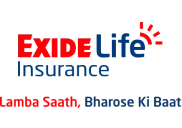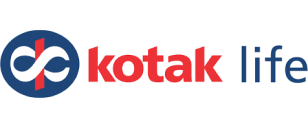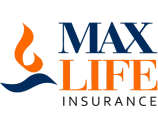
The life insurance underwriting process determines whether the applicant is eligible to get the applied insurance policy or not. This is determined based on his/her physical as well as financial health. If the applicant is suffering from any critical disease, then he/she may not be considered eligible for purchasing the insurance policy. In the life insurance underwriting, the underwriter also analyses the financial condition of the applicant before approving the coverage and premium. The underwriter ensures that the applicant will be able to pay his/her insurance premium on time. In this way, the underwriter provides the policyholders with the best insurance schemes.
Table of Contents
- What is underwriting in life insurance?
- Who underwrites an insurance plan?
- Life insurance underwriting types
- Life insurance underwriting process
- The risk factors considered in life insurance underwriting
- Implications of taking life insurance without underwriting
- Duration of the underwriting process in life insurance
What is underwriting in life insurance?
Underwriting in insurance is used to assess the risk. Therefore, the underwriters are called risk managers in insurance companies. They use some underwriting guidelines before providing the applicants with suitable insurance products. These underwriting guidelines are determined based on the mortality statistics. Hence, the underwriter analyses eligibility for the chosen insurance products based on the applicant’s age, salary, occupation, health, family size, hobbies, etc.
In this way, the insurance companies provide that insurance coverage to the policyholders for which they are eligible. The underwriting process in insurance helps the insurance companies by not making them provide the underserved insurance coverage.
Who underwrites an insurance plan?
An insurance underwriter works in an insurance company and assesses the overall risk to the life or health of the insured to check whether the premium offered is worth the risk to his life or health, as the case may be.
Thus, an underwriter’s basic job responsibility is to verify the insured’s data along with the documents submitted for any discrepancy and confirm if the insured is eligible for the insurance plan he has applied for. They can ask for more information, request medical examinations, or conduct background checks for verification.
To know more about the roles and responsibilities of an Insurance Underwriter, click here.
Life insurance underwriting types:
There are several types of underwriting processes. Read the pointers below to understand the various types of life insurance underwriting:
Financial Underwriting
Financial underwriting includes occupation, salary/wages, family size, ability to pay the premium, etc. When the underwriter approves the insurance plan for the applicant, he/she analyses whether the plan is appropriate or not according to his/her requirements. If the applicant purchases an insurance plan that is not under their budget, then, the underwriter suggests to him/her the best insurance product.
In the underwriting process, it is ensured that the policyholder will be able to pay the premium of the life insurance policy on time. Therefore, the insurance products are given according to the applicant’s financial condition.
A financial underwriter needs to check the following documents of the insurer:
- Proof of Income:
- Salary certificates, Form 26AS, ITR or Income Tax Return or TDS certificates
- Bank account or credit card statements, credit score, etc.
- P&L statement of a company along with AOA, MOA, Board Resolution, etc. as the case may be.
- Other identification documents:
- Copy of the PAN Card
- Copy of the Aadhaar Card
- Other utility bills such as gas, water, electricity or telephone bills.
- Proof of Income:
- Medical Underwriting
Medical underwriting includes health, past health issues, family’s health history, lifestyle, and addictive habits (if any). The underwriter approves the insurance plan for the applicant by analyzing his/her medical condition in detail.
If the insurer’s health risk is high, the premium would also be loaded, i.e. higher than standard. The insurer may even choose to postpone or reject an insurance plan if the health risk is considered to be very high. Alternatively, there could be waiting for a period or an exclusion clause for the higher elements of risk.A medical underwriter gathers details such as:
- Pre-existing ailments and other diseasesThe prescription of a medical practitioner or a doctor MER (medical examination report) with tests and samples, as and when neededMedical history of the family.
The medical underwriter checks all details along with the duly filled form, and analyse whether the insurance policy can be accepted at the said price point or not.
The underlying condition is to ensure that all relevant information is mentioned or disclosed right at the beginning of the policy.
Life insurance underwriting process
The most important tools that are used in the insurance underwriting process are the insurance proposal form, questionnaire sales report, Aadhar card, PAN Card, income proofs (bank passbook, salary slips, income tax details, etc.), client confidential report (CCR), etc.
Read the following steps of the process of underwriting in insurance:
Step 1: Quality check of the proposal form:
- Firstly, the information in the proposal form that has been filled will be checked. Hence, fill out the form carefully
- Each detail is checked in accordance with the attached documents
- After validating the details, the application form goes for the underwriting process
- The underwriter analyses whether you will be able to pay the premium or not for the chosen insurance product
Step 2: Medical examination:
- The results of the paramedical examination are checked if your insurance product requires any health proof
- A simple health check-up is done by the doctor, which may include a blood test, drug test, and the basic measurements (height, weight, and size)
- These medical reports are analysed by the underwriter before approving the insurance product
Step 3: Final Approval:
- The entire underwriting process takes from 3 to 8 weeks
- After validating all the details, the insurance plan is either approved or disapproved.
- The insurance policy and its premium are confirmed if approved.
There are 3 possible underwriting in insurance decisions:
- Acceptance:
When the risk is standard, the insurance policy is accepted at par without any loading of premium. - Postponement:
If the risk is high but temporary, then there could be a postponement in the life insurance policy until the risk is mitigated. - Rejection:
If the risk is so high that the insurance policy cannot be accepted, then the same is outrightly rejected. - Counteroffer:
If the risk is high and cannot be accepted at the standard rate, the insurance company could give a counter offer with either a reduction in tenure or sum assured, or an increase in the premium or a waiting period or exclusion, temporary or permanent in nature.
The risk factors considered in life insurance underwriting
Check out the risk factors that are considered in the life insurance underwriting process:
- Age and gender of the insured
- Medical history of self and family:
If you are diagnosed with any serious health issue, then, your application form will be rejected in the life insurance underwriting process. Critical health issues (diabetes 2, cardiovascular disease, etc) are considered genetic diseases. Hence, the underwriter analyses the family’s medical history as well to measure your health risks. - The residency status i.e. resident India, NRI, PIO (person of Indian origin), etc.
- Body Weight:
If you are overweight/obese, it means your possibility of suffering from serious health issues in the future is high. Hence, slightly higher rates of insurance premiums are determined by the underwriter during the underwriting process in insurance. - Addictions:
If you are addicted to smoking/drinking/drugs, it means you are associated with the risk factors of critical illness for the long term. In this case, the proposal form may not be accepted in the underwriting process. All drug abuse records are checked by the underwriter. - Driving and accidental records
- Insurable interest in case the policyholder and the insured are different
- The income and net worth of the insured
- Hobbies such as adventure sports, hiking, car racing, etc.
- Occupation
- The geographical location of the residence
- The amount of coverage applied for along with the existing coverage
- Criminal records
- International travel
- Previous insurance application and rejection, along with reasons.
Implications of taking life insurance without underwriting
You should not take the insurance policy without the underwriting process as you will not be able to know whether the life insurance company will be able to provide your family with the risk coverage or not if your risk exposure is high. The underwriting process in insurance determines how much insurance coverage the insurance company would be able to provide and at what premium rate. The insurance premium is computed based on your risk exposure.
The underwriting process makes the insurance companies more credible as they settle the claims of the policyholders on time. In this way, the insurance companies are serving society.
Duration of the underwriting process in life insurance
The underwriting process in life insurance takes the time from 2 to 8 weeks. The underwriter examines the information that you have filled out in the proposal form and ensures that you will be able to pay the premium without any ado. If no fact is hidden by you, then your insurance policy and its premium will be confirmed easily. Therefore, share your details transparently with the insurance companies.
Bottom Line
If you are buying an insurance product, make sure you pick the one that matches your financial and medical condition. In this way, your proposal form will not be rejected in the process of underwriting in insurance and you will be able to get the plan of your preferred insurance coverage at affordable premium rates. Hence, choose the best life insurance plan that will be able to serve your family in the best possible manner if any kind of mishap happens to you.
With the technological advancements and availability of data coupled with artificial intelligence, risk elimination, and selection could be a more systematic process with adjustments in the underwriting strategies and tools to suit the fast pace of the industry at large.
Read more:
- Guaranteed Income Plans of Life Insurance
- Top Life Insurance Companies in India (Updated List 2024)
- PLI Status
- CSR for Top Term Insurance
FAQs
- If I hide my critical illness, will my insurance premium decrease?
If you hide your critical illness, your insurance premium will not decrease because your medical examination will be done by a doctor. If in the medical test, it is found that you have tried hiding any medical fact, then your proposal form will be rejected in the life insurance underwriting process
- Can the insurance company deny settling my claim?
Under most circumstances, the insurance company can not deny settling your claim. The insurance company’s fundamental duty is to settle the claims on time. The main aim of the company is to serve the policyholders. However, if any discrepancy is found in the information you gave, then, the possibility of not settling the claim increases.
- How does the underwriter compute the premium amount?
Firstly, the underwriter analyses the financial condition, lifestyle, and family size of the applicant. Then, the other risk factors i.e. age, family medical history, health issues, body weight, smoking habits, etc. are examined. Thereafter, the underwriter computes the premium rate based on the applicant’s financial condition and risk exposure.
- Which documents should I attach with my proposal form?
Your insurer will request certain documents. You should keep the following handy:
- Aadhar card
- PAN card
- Driving license
- Residential proof
- Bank passbook
- Salary slips
- Income tax documents with the proposal form.
DISCLAIMER
This article is issued in the general public interest and is for educational purposes only. The blogs should not be used as a substitute for competent expert advice from a licensed professional to best suit your needs. Insurance is a subject matter of solicitation. For more details on policy terms, conditions, exclusions, and limitations, please refer to/read the policy brochure before concluding sale.
Found this post informational?
Browse Turtlemint Blogs to read interesting posts related to Health Insurance, Car Insurance, Bike Insurance, and Life Insurance. You can visit Turtlemint to Buy Insurance Online.






























